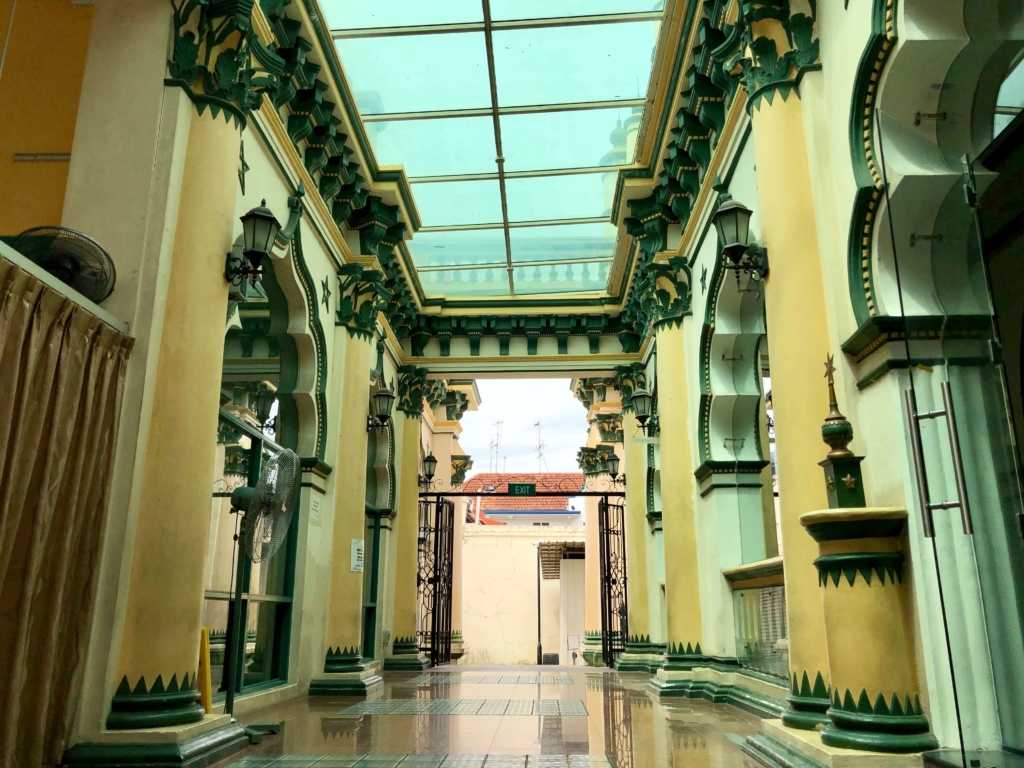Abdul Gafoor Mosque
Tags : Mosque
Timings : Fridays: 8:00 AM - 12:00 PM, 2:30 PM - 8:00 PM
All other days: 8:00 AM - 8:00 PM
Time Required : Less than 1 hour
Entry Fee : No entry fee
Abdul Gafoor Mosque, Singapore Overview
Abdul Gafoor Mosque is one of Singapore's most important mosques located in Little India. Gazetted as a protected national monument, it showcases an eclectic mix of Southern Indian, Victorian and Moorish architectural styles. A major highlight is a sundial crowning the main entrance. Each of its 25 rays is decorated with Arabic calligraphy denoting names of 25 prophets.
The mosque is named after its founder, Shaik Abdul Gafoor, a South Indian lawyer's clerk, who felt the tremendous need to replace the dilapidated Al Abrar Mosque which once stood in the same place. The mosque primarily served as the place for worship for Indian Muslim migrants who settled in the vicinity. The Abdul Gafoor Mosque was renovated to its present form in 1907.
Read More on Abdul Gafoor Mosque
Architecture of Masjid Abdul Gafoor
- With its area of 2,449 sq. m, it can accommodate up to 4000 worshippers at the same time.
- A panel with calligraphic inscriptions is present just above the entrance.
- A sundial that emits 25 rays of the sun decorated in Arabic calligraphy with names of 25 prophets lies just above the panel.
- Above the sundial is an onion-shaped dome, with a square minaret and a series of miniature columns and arches on each side.
- The prayer hall is raised above the ground level and surrounded by verandas on all sides.
- Fine Arabic calligraphy and stained glass windows flaunt the interiors.

- In the middle of the prayer hall is a cupola, a hexagonally shaped tower (called cupola) protrudes from the centre of the prayer hall and protrudes from the roof deck.
- At the top of the cupola is a large, onion-shaped dome with a star and crescent moon at the pinnacle, accompanied by minarets at the corners.
- Large Corinthian columns support the four corners of the building.

History & Heritage
In 1881, when the Dunlop Street Mosque Endowment was established, Sheik Abdul Gafoor was appointed as one of the trustees of the mosque. A Muslim Tamil, he was the chief clerk at a law firm at the time. As a trustee of the mosque, Abdul Gafoor obtained permits to construct several shophouses around the mosque. The mosque, today is sheltered amidst these very shophouses.
As the income from these shophouses accumulated over time, the construction of a new mosque began in 1907, when the wooden mosque began to break down. Upon its completion three years later, the old mosque (Al-Abrar Mosque) was no longer used for religious purposes. From the new church's early decades up to 1980s, the mosque was at times referred to as Dunlop Street Mosque. However, in the subsequent decades, it became predominantly known as Abdul Gaffoor Mosque.

Tips
- Non-muslims are not allowed in the prayer hall at all times.
- Shoes must be removed before entry.
- Photography is allowed inside.
- Proper dress code and etiquette must be maintained while on the premises. Robes are available in case of inappropriate clothing. The recommended dress code is Sleeved Tops & Long Pants, for men, Long-sleeved Tops, Bottoms Down to Ankle for women, and Sleeved Tops & Track Pants for students. Please make sure the clothes are not see-through.
- Visiting during Jumuaah (Friday congregational prayer) can be an enlightening experience.
